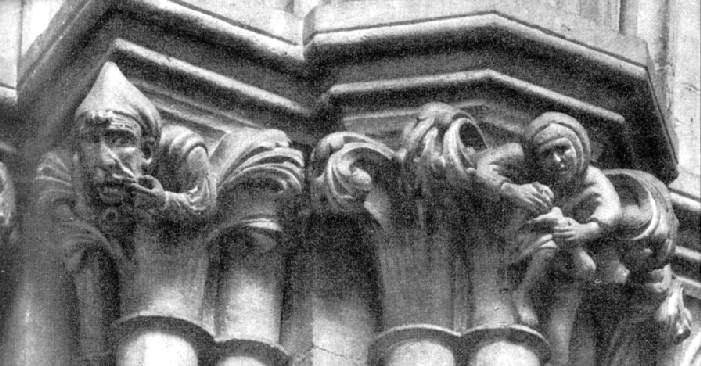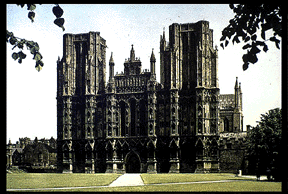
The mid-thirteenth century witnessed the largest cathedral-building campaign of the whole Middle Ages. The reasons for this climax are diverse. First, with the construction of new roads and bridges, transportation was improved. This meant that materials for the new cathedrals were more easily attained. An influx of silver and an urban growth created a diversity of labourers and tradesmen. And most importantly, ecclesiastical incomes rose as a result of increased efficiency of management and administration. The combination of these factors together created the flourishing of the Gothic period.

Wells Cathedral, below, became Britain's first all-pointed and all-Gothic cathedral when it was rebuilt in 1175. It is considered one of the most beautiful of Britain's cathedrals, and one of the most influential as well. Its style became the template of the new trend in British cathedrals and was to be copied many times. Above is a detail from the exterior of the cathedral.



